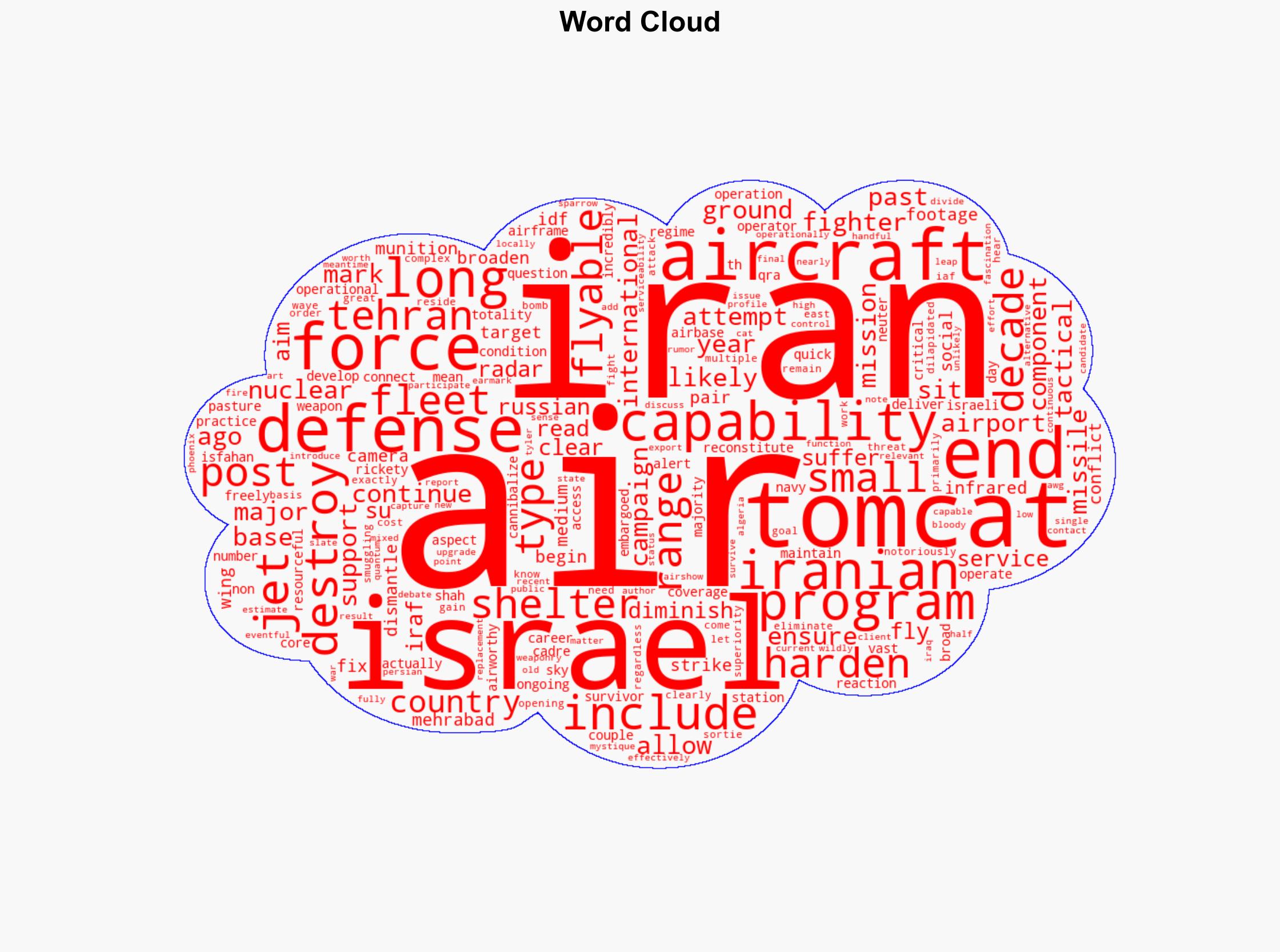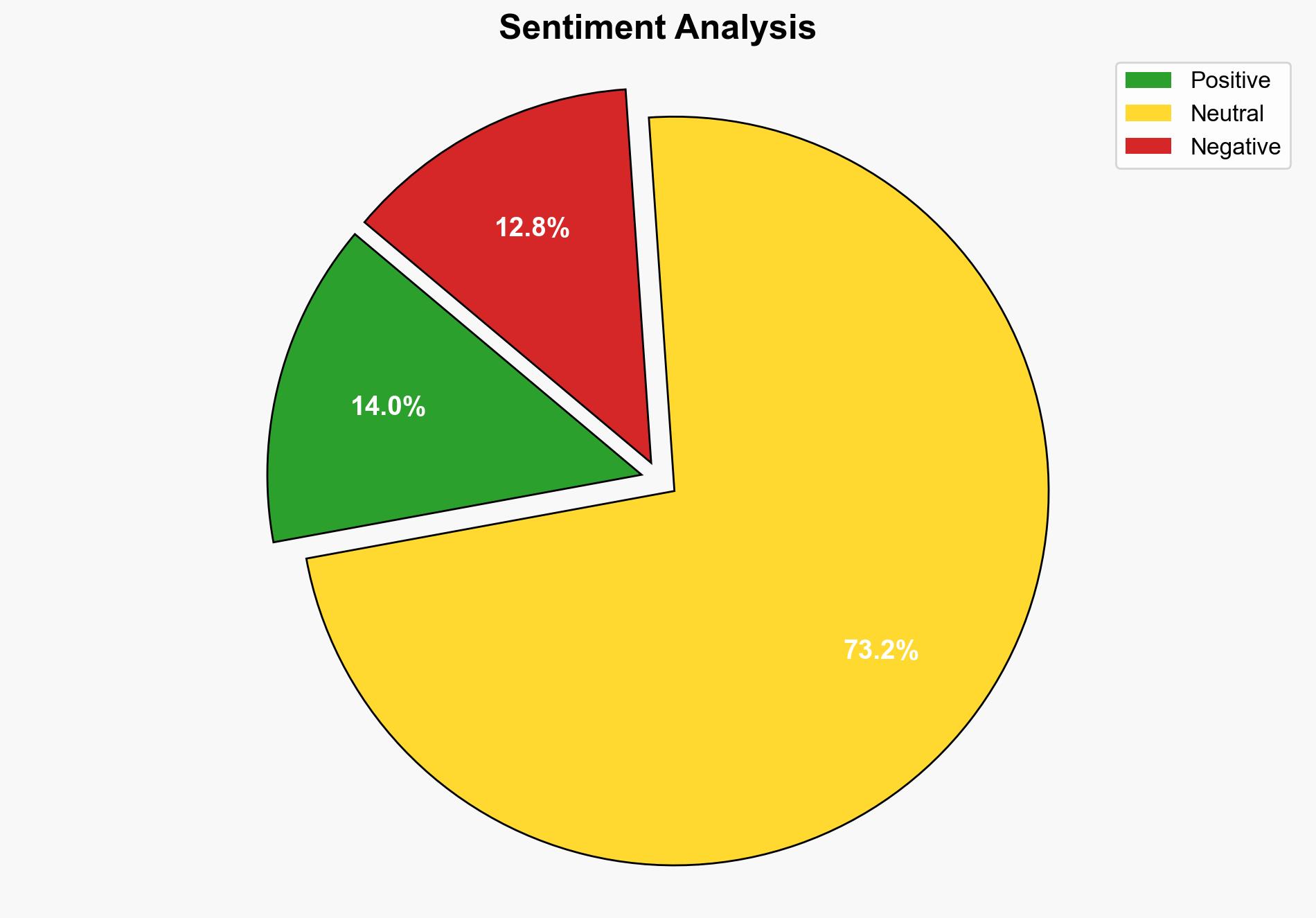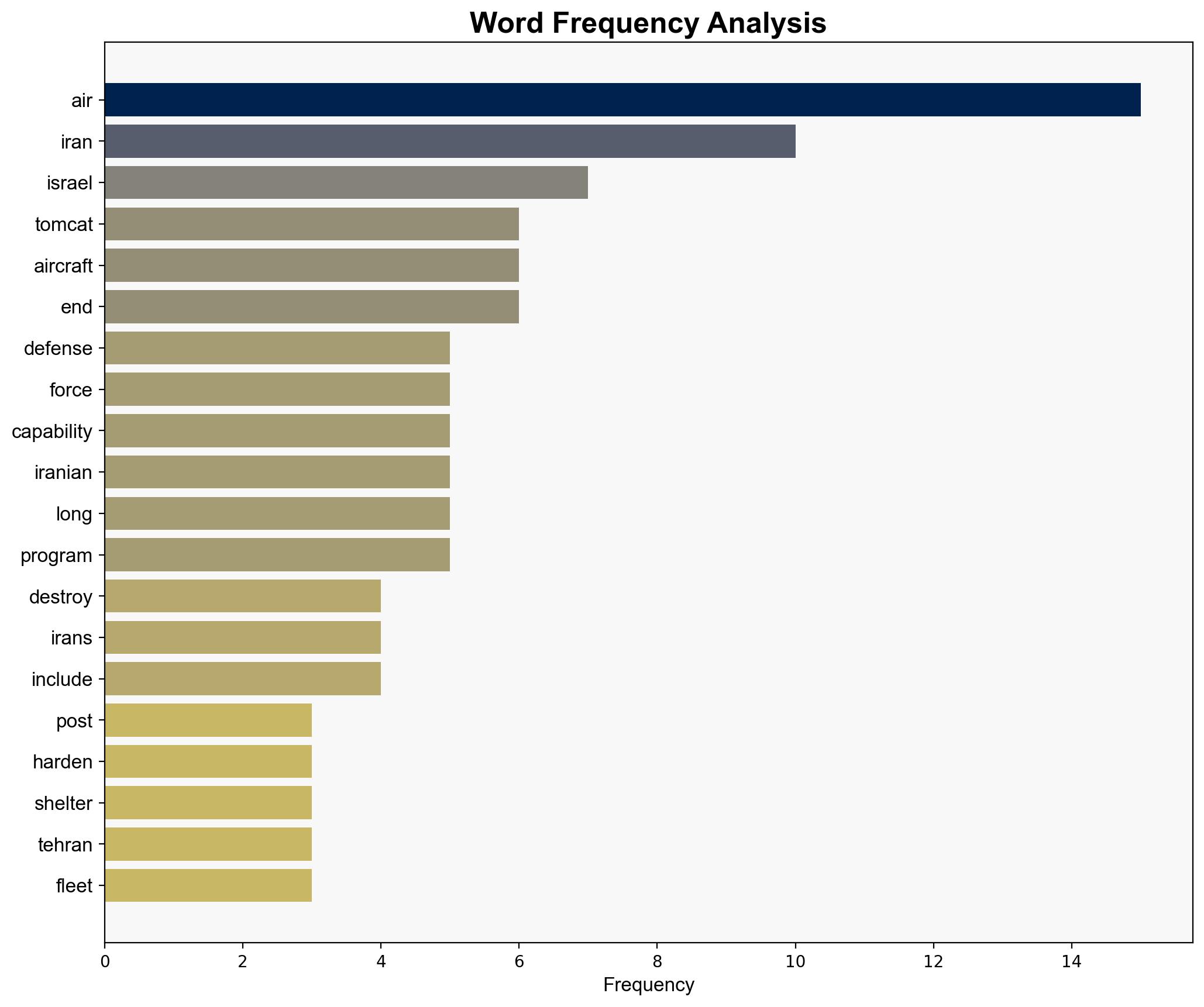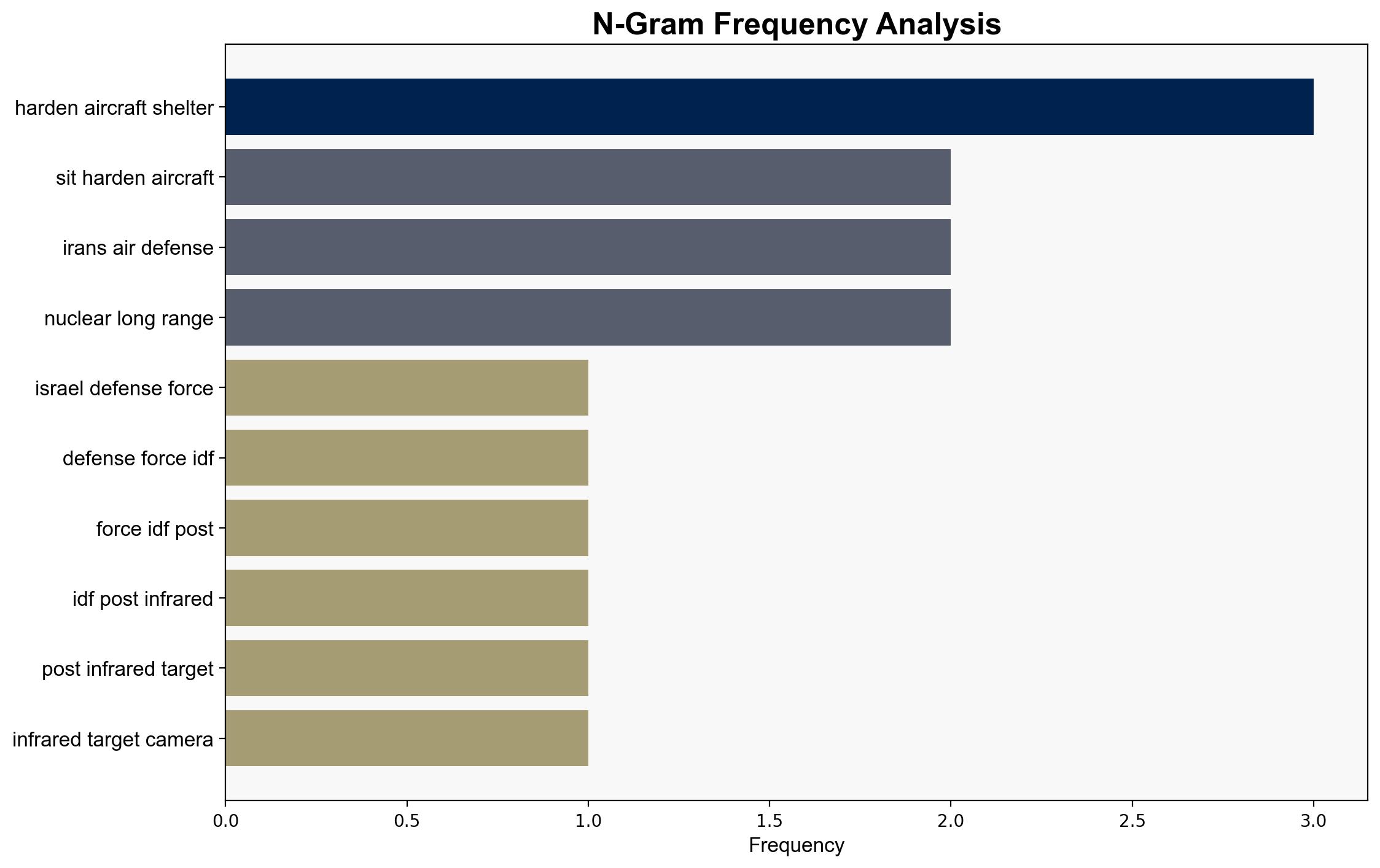Iranian F-14 Persian Tomcats Obliterated In Israeli Airstrike – Twz.com
Published on: 2025-06-16
Intelligence Report: Iranian F-14 Persian Tomcats Obliterated In Israeli Airstrike – Twz.com
1. BLUF (Bottom Line Up Front)
The Israeli Defense Forces (IDF) have reportedly conducted an airstrike targeting Iranian F-14 Tomcat fighters at Mehrabad International Airport in Tehran. This action is part of a broader Israeli strategy to dismantle Iran’s air defense capabilities, potentially impacting Iran’s ability to maintain its nuclear and missile programs. The strike may signify the end of the operational role of Iran’s F-14 fleet, which has been maintained under challenging conditions for decades.
2. Detailed Analysis
The following structured analytic techniques have been applied to ensure methodological consistency:
Causal Layered Analysis (CLA)
At the surface level, the airstrike represents a tactical move by Israel to neutralize immediate threats. Systemically, it reflects ongoing regional tensions and power dynamics, with Israel aiming to maintain air superiority. The worldview underpinning this action is one of preemptive defense against perceived existential threats. Mythically, it reinforces narratives of resilience and strategic dominance.
Cross-Impact Simulation
The airstrike could destabilize regional relations, prompting responses from neighboring states. Economic dependencies, such as oil markets, may experience volatility. The action may also influence global diplomatic engagements with Iran.
Scenario Generation
Potential scenarios include increased military engagements between Israel and Iran, diplomatic escalations involving global powers, or a shift in regional alliances. Each scenario carries distinct implications for regional stability and international relations.
3. Implications and Strategic Risks
The destruction of Iran’s F-14s may lead to a reassessment of its military strategies, potentially accelerating efforts to acquire advanced aircraft from allies like Russia. This could heighten military tensions and trigger an arms race in the region. Additionally, the strike underscores vulnerabilities in Iran’s air defense, which may be exploited in future conflicts.
4. Recommendations and Outlook
- Enhance diplomatic efforts to de-escalate tensions between Israel and Iran, potentially involving third-party mediation.
- Monitor Iran’s military procurement activities and regional alliances to anticipate shifts in power dynamics.
- Scenario-based projections:
- Best case: Diplomatic resolution reduces regional tensions.
- Worst case: Escalation leads to broader conflict involving multiple states.
- Most likely: Continued low-intensity conflict with periodic military engagements.
5. Key Individuals and Entities
Tyler (Author of the original report)
6. Thematic Tags
national security threats, cybersecurity, counter-terrorism, regional focus





